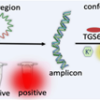Nafithromycin, developed through extensive research and collaboration among Indian scientists, has emerged as a promising alternative in the ongoing battle against resistant bacterial strains. Antibiotic resistance has rendered many conventional treatments Ineffective, leading to increased morbidity and mortality rates. As such, the introduction of Nafithromycin is timely; it not only expands the arsenal of available antibiotics but also underscores India’s capability to produce novel therapeutic agents that address pressing health challenges.
The implications of this launch extend beyond the medical realm, suggesting a paradigm shift in India’s approach to drug discovery and development. Dr. Singh’s announcement highlights the importance of fostering indigenous research initiatives while aiming to achieve self-sufficiency in pharmaceutical production. This strategy aligns with the government’s broader vision of promoting a robust biotechnological framework, enhancing access to essential medicines, and ultimately ensuring better health outcomes for the population.
Moreover, the successful development of Nafithromycin signals a potential increase in public and private investment in research and development, encouraging collaborative efforts in the pursuit of innovative healthcare solutions. This momentum must be sustained and augmented by supportive policies that incentivize scientific research and encourage the translation of laboratory findings into market-ready products.
In conclusion, the soft launch of Nafithromycin signifies a milestone in India’s endeavor to confront the alarming rise of antibiotic resistance. It not only reflects the nation’s commitment to advancing healthcare through indigenous innovation but also serves as a testament to the resilience and ingenuity of its scientific community. As stakeholders mobilize to promote the utilization of this groundbreaking antibiotic, it is imperative to remain vigilant and proactive in addressing the broader issue of drug resistance, ensuring that future generations can rely on effective medicinal interventions.


